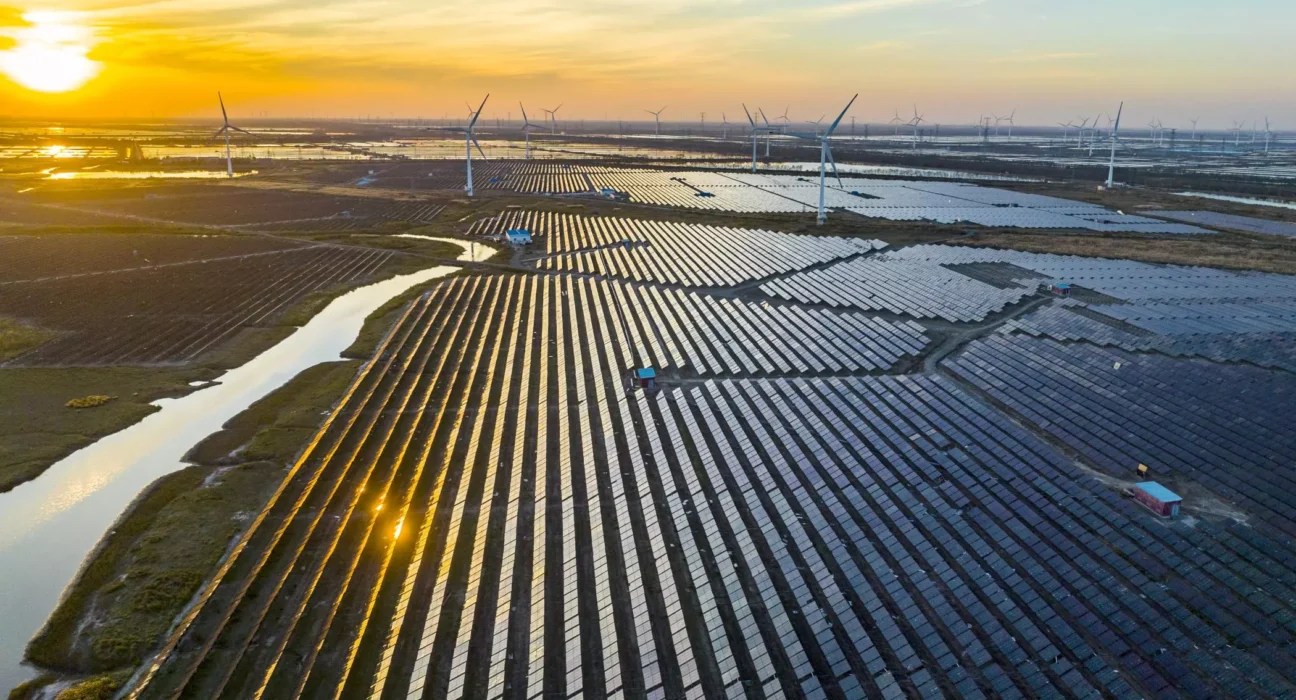European public opinion broadly favours ambitious measures to tackle global warming. This has been shown by observational data (European Commission, 2023) and seems to have been corroborated by the strong performances of Green parties in the 2018 European elections and in a number of national elections since.
However, European Union climate policies, being put in place as part of the green transition, are set to intrude more and more into the lives of Europeans 1 . For instance, the EU emissions trading system, which so far has impacted industrial production, will be extended in 2027 to heating and transportation, potentially broadening the parts of the population touched directly by climate policy. While the EU has ambitious goals, the policies to reach them are not yet fully developed, and therefore political pushback has been limited.
There is evidence that, despite the broad support for climate policies, such polices can have political consequences in some circumstances. Furceri et al (2021) showed that climate policies are politically costly when inequality is high and social insurance is scarce. For Italy, Colantone et al (2023) demonstrated that income losses associated with green policies increased the likelihood of voting for the right-wing, populist Lega Nord.
Populist political parties often bundle grievances together, including opposition to green policies along with other issues, such as migration. The Dutch Freedom Party, which finished unexpectedly in first place in the 22 November Dutch elections, campaigned heavily against extending climate action. This should be a wake-up call: environmental-policy backlash in a country that has consistently shown strong public support for prioritising climate action. In Germany, meanwhile, support for the Green Party, fell from a predicted 23 percent vote share in July 2022 to about 13 percent in November 2023 2 .
Europe’s economic transition towards a carbonless, sustainable future is likely to require deep transformation of entire economic sectors, producing big winners and losers: some individuals, regions or states might be better off throughout the green transformation, while others might see their incomes squeezed as they struggle to compete in the new economy, or fail to muster the finances needed to ensure transformation. The question thus arises: how much are people prepared to pay for climate policies?
Income and emission reduction trade-offs
The evidence for apparently broad support for climate policies in Europe comes from traditional survey tools that fail to take into account whether such support persists when the possible costs of the green transition are factored in. Whether individuals and groups will continue to favour current or even more stringent climate targets, regardless of their income effects, remains an open question.
We asked people in five EU countries (France, Germany, Italy, Netherlands, Spain) to evaluate a policy that would: (1) maintain or revise EU climate goals while having effects on (2) their personal income, (3) incomes in their region, (4) incomes in their country, and (5) incomes in the EU 3 . The study was designed to gauge a possible causal link between climate policy and public preferences, enabling us to assess how people trade off climate objectives with the potential gains or losses from those objectives for themselves and for various groups 4 .
Our main finding (Figure 1) is that ambitious emission reduction goals will always be preferred over less ambitious goals if the effects on income are the same, suggesting that opposition to climate ambition is more material than ideological. Respondents did not differentiate between a 20 percent greater emissions reduction goal compared to the baseline and a 10 percent greater reduction goal; both are preferred nearly equally over the baseline of a 55 percent reduction in emissions by 2030, compared to 1990, which is the EU’s current target.
Figure 1: How changing climate goals and income changes effect public support, %
| Source: Bruegel. Note: The figure shows changes in public support for climate policies depending on a range of variables: increases or decreases in emissions reductions goals without effects on income, and in scenarios of decreasing or increasing income linked to current climate policies. The current EU goal is a 55 percent reduction in emissions by 2030 compared to 1990. -0.1 = complete lack of support, +0.1 = full support. * = varying emissions reduction target to be achieved by 2030 compared to 1990. Regional income = income of the respondent’s region; country income = income of the respondent’s country; EU income = EU-wide income. The lower and upper bounds indicate 95 percent confidence intervals. |
However, we found that people are very sensitive to the negative effects climate policies might have on their personal incomes: support for any emissions-reduction policy falls by 7.5 percent if it produces negative personal income effects. Gains in personal income, on the other hand, do not carry the same weight: a policy that would weaken the EU’s emissions reduction target to 45 percent by 2030 compared to 1990, but that produces an increase in personal income, would garner less support than a policy that maintains the current target of a 55 percent reduction, but leaves income untouched.
This pattern fits with plenty of theory and evidence in behavioural economics that losses skew opinions more strongly than gains. The pattern suggests that Europeans are in principle in favour of fighting climate change, and are willing to forego increases in income to do it. But they are unwilling to incur direct welfare losses to pursue climate ambition. To a lesser extent, we found that Europeans are also sensitive to the income effects that climate policies could have on the people in their regions, countries and the EU as whole.
What gains the most support?
Policymakers might then ask what support there is for policy combinations with certain aggregate features and effects. We looked at six combinations:
- Income increases but the emission-reduction goal drops to 45 percent instead of 55 percent;
- No changes in income or targets, ie the status quo today;
- A larger emissions drop by 2030 (65 percent reduction) and a reduction in income;
- An emissions reduction target of 75 percent by 2030 and a reduction in income;
- A 75 percent emissions reduction but without an impact on income;
- A 75 percent emissions reduction and a positive effect on income.
Figure 2 shows that the current EU emissions reduction plan – a 55 percent cut in emissions by 2030 – is supported by at least 43 percent of western Europeans, assuming it leaves incomes unaffected (our combination 2).
Figure 2: How combinations of changes to emissions goals and income effects impact public support (level of support in %)
| Source: Bruegel. Note: We have used conservative estimates of support. Policy combinations assessed in a neutral way are considered not supported. The lower and upper bounds indicate 95 percent confidence intervals. |
However, should current targets produce a personal income loss, support would decrease significantly: in our conservative estimates, only about 36 percent of western Europeans would continue to support existing targets (our combinations 3 and 4), highlighting the importance of support or compensation measures, even in the current policy environment 5 . Figure 2 also shows that there is really no support for further increasing climate targets if they produce, on aggregate, negative income effects. Support for more ambitious targets will require income to be unaffected or preferably even increased (our combinations 5 and 6), suggesting that EU climate policy must evaluate very seriously how to manage the climate transition so it is not too distortive of people’s livelihoods.
In the short run, this is likely to mean sizeable compensatory measures will be needed for those Europeans who stand to lose out from the climate transition. Achieving a green transformation while ensuring that individuals and regions are not left behind will require substantial public funding. This is certainly true if EU leaders wish to increase emissions reduction goals, but our results suggest that even in the current policy environment, policymakers should ensure that the climate transition does not produce excessive or distortive income effects.
The EU Social Climate Fund 6 , set to start in 2026, will be one instrument to tackle distortions. It will have a budget of up to €65 billion from the European Commission and an extra €21.7 billion from EU countries. It will target those parts of the population most vulnerable to income losses arising from the green transition, including by providing direct income support.
Since the goals of the Fund are both to compensate for climate policy-related costs and to improve the political sustainability of the climate transition, future extensions of the Social Climate Fund should provide direct, transparent and easily accessible payments to those negatively affected by the climate transition (Pisani-Ferry et al, 2023). On the revenue side, a serious expansion of Europe’s fiscal capacity in the coming years will be needed, including extension of the EU’s borrowing powers and its capacity to raise direct resources. Revenues could also be raised from polluters outside the EU, for instance through the EU carbon border adjustment mechanism.
Our data shows that the European climate transition can no longer be decoupled from appropriate, direct and transparent compensation mechanisms to achieve political sustainability. Without such mechanisms, the risk of a political backlash will continue to grow.
Source : Bruegel.org






